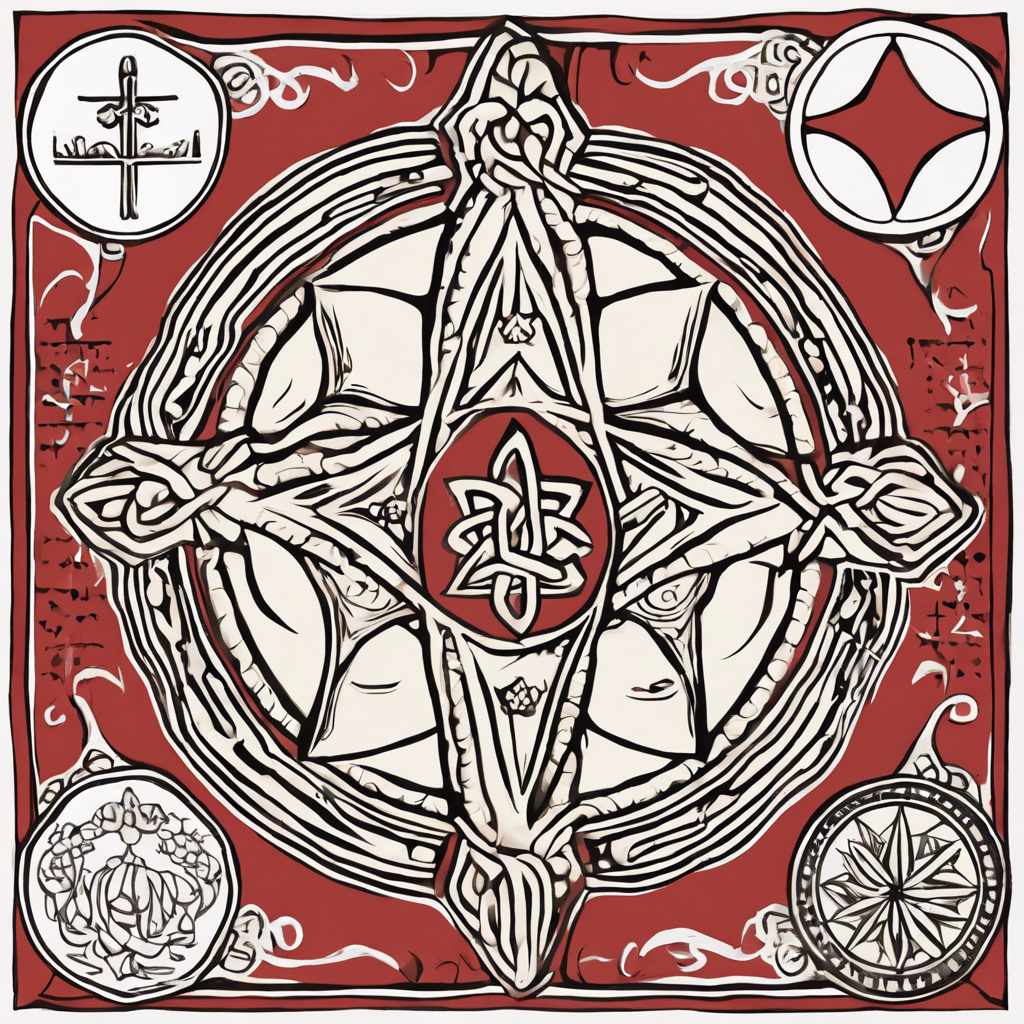
What Role Do Symbols Play In The Interpretation Of Major Religious Texts?
Introduction
Symbols are essential to the interpretation of major religious texts, serving as vital conduits for deeper meanings that resonate deeply with followers of faith. These religious symbols act as visual representations of complex theological concepts and values, allowing believers to engage intellectually and emotionally with their spirituality.
Understanding Religious Symbols and Their Importance
Throughout history, religious symbols have been fundamental to practices and teachings across various faiths. They encapsulate core beliefs and narratives, often portraying what might be difficult to express verbally. For example, the cross in Christianity signifies sacrifice and redemption, while the crescent moon and star in Islam symbolize guidance and faith. By understanding these symbols, adherents can better grasp the nuances of their beliefs, creating a shared language that surpasses spoken and written communication.
- Symbols express intricate theological ideas clearly and concisely.
- They cultivate a sense of community and collective understanding among believers.
- Religious symbols often possess significant historical and cultural importance.
Key Religious Symbols and Their Meanings
Many religious texts employ symbols to convey pivotal teachings and concepts. Notable examples include the lotus flower in Hinduism, which represents purity and spiritual awakening, and the Dharma wheel in Buddhism, symbolizing the path to enlightenment. These religious symbols serve not only as identifiers of faith but also as reminders of the ethical and moral teachings inherent in their respective religions, guiding followers in their spiritual journeys and daily lives. Additionally, in Judaism, the Star of David signifies identity and heritage, while in Christianity, the fish symbol (Ichthys) embodies faith and the early Christian community.
- The lotus flower in Hinduism symbolizes spiritual growth and enlightenment.
- The Dharma wheel in Buddhism embodies Buddha's teachings and the cycle of life.
- The Star of David in Judaism represents cultural identity and heritage.
The Role of Symbols in Religious Interpretation
The influence of symbols in religious texts extends beyond personal comprehension; they significantly shape how communities interpret and enact their beliefs. Symbols often engage followers in practices and rituals that reinforce a connection to the divine. Furthermore, they can prompt discussions and diverse interpretations among different sects or denominations within the same faith, highlighting the dynamic nature of religious understanding. Additionally, symbols evolve over time, reflecting changes in cultural and societal values.
- Symbols may result in varied interpretations across different groups.
- They promote dialogue regarding faith and belief systems.
- Religious symbols frequently evolve, mirroring modern values.
Conclusion
In conclusion, symbols play a crucial role in interpreting major religious texts, serving as keys to understanding deeper meanings and fostering communal bonds among followers. Their capability to convey complex ideas through simple imagery highlights the richness of the spiritual experience, guiding adherents on their faith journeys.
Expert Quote
Dr. Mircea Eliade, Historian of Religion
Symbols are fundamental in religious expression; they not only convey spiritual truths but also serve as a means for the individual to connect with the divine.
The Sacred and the Profane: The Nature of Religion, 1959
Relevant Links
Religious symbolism and iconography | Description, Meaning ...
https://www.britannica.com/topic/religious-symbolismChapter 15. Religion – Introduction to Sociology – 1st Canadian ...
https://opentextbc.ca/introductiontosociology/chapter/chapter-15-religion/Religion in the Public Schools | Pew Research Center
https://www.pewresearch.org/religion/2019/10/03/religion-in-the-public-schools-2019-update/Section 12: Religious Discrimination | U.S. Equal Employment ...
https://www.eeoc.gov/laws/guidance/section-12-religious-discriminationReligious Studies | Kenyon College
https://www.kenyon.edu/academics/departments-and-majors/religious-studies/YouTube Videos
Most popular questions

How Do The Personal Relationships Among Gods Affect Their Decisions In The Iliad?
The intricate relationships among the gods in Homer's epic poem 'The Iliad' play a crucial role in shaping their actions and decisions. These divine interactions create a complex web of fates, where each god's personal alliances and rivalries directly influence the events of the mortal world.

What Strategies Can Parents Use To Educate Their Children About Online Safety Beyond Privacy Settings?
In today's digital landscape, teaching children about online safety is essential for their protection and well-being. While privacy settings play a critical role, parents can implement various strategies to create a thorough understanding of online safety principles among their children.

What Are The Different Types Of Insulation Materials Commonly Used In Buildings, And How Do They Compare In Terms Of Thermal Resistance?
Insulation materials are vital for enhancing energy efficiency in residential and commercial buildings by minimizing heat transfer. Understanding the various insulation types can lead to better choices for thermal resistance and overall comfort.
Most recent questions

What Are The Socio-economic Impacts Of Tourism Generated By Film Festivals Compared To Music Festivals?
Festivals play a pivotal role in boosting tourism and enhancing local economies, yet the socio-economic impacts of film festivals significantly differ from those of music festivals. This detailed comparison highlights various benefits and challenges associated with both types of festivals, influencing local communities in distinct ways.

What Role Do Local Musicians Play In Shaping The Cultural Identity Presented At Traditional Music Festivals?
Local musicians are pivotal in shaping the cultural identity at traditional music festivals. As performers and cultural ambassadors, their distinctive styles and interpretations of music illustrate the rich heritage and vibrancy of their communities, delivering an engaging experience filled with sound and tradition at these cultural events.

How Do Interactive Elements In Video Games Influence Emotional Engagement Compared To Character-driven Storytelling In Serialized TV Shows?
The impact of interactive elements in video games on emotional engagement provides a compelling comparison to character-driven storytelling in serialized television shows. Both video games and TV series leverage narrative techniques and emotional triggers to captivate their audiences, yet they do so in fundamentally unique ways that shape how players and viewers experience and connect with each story.